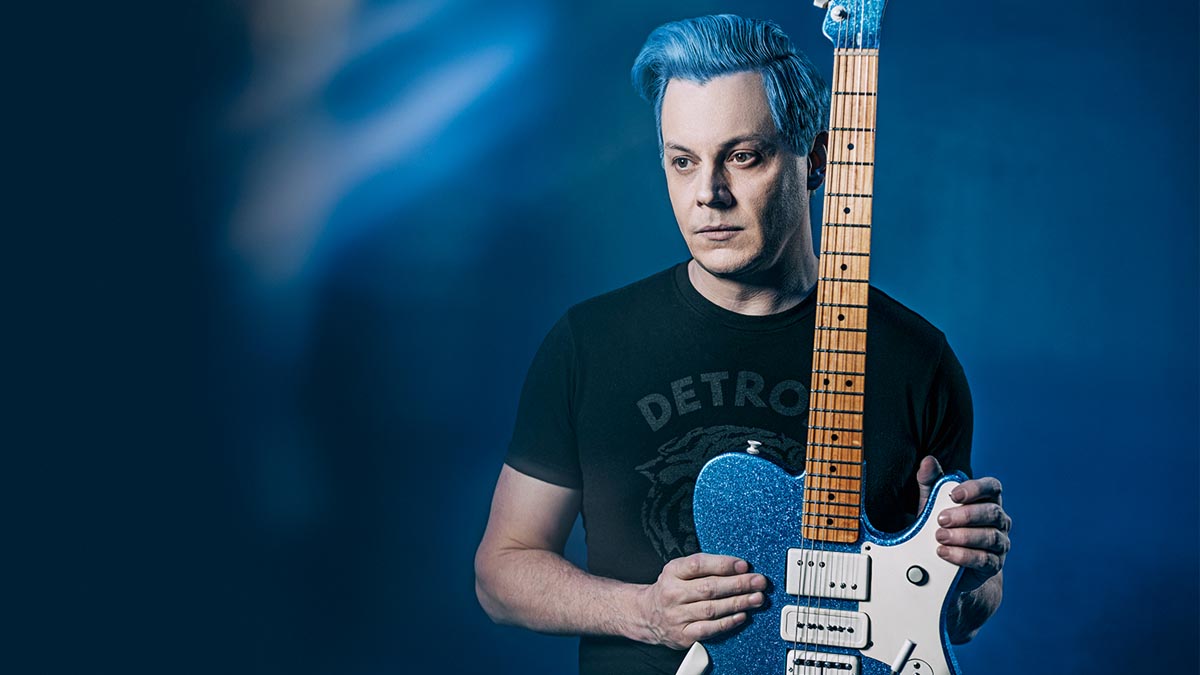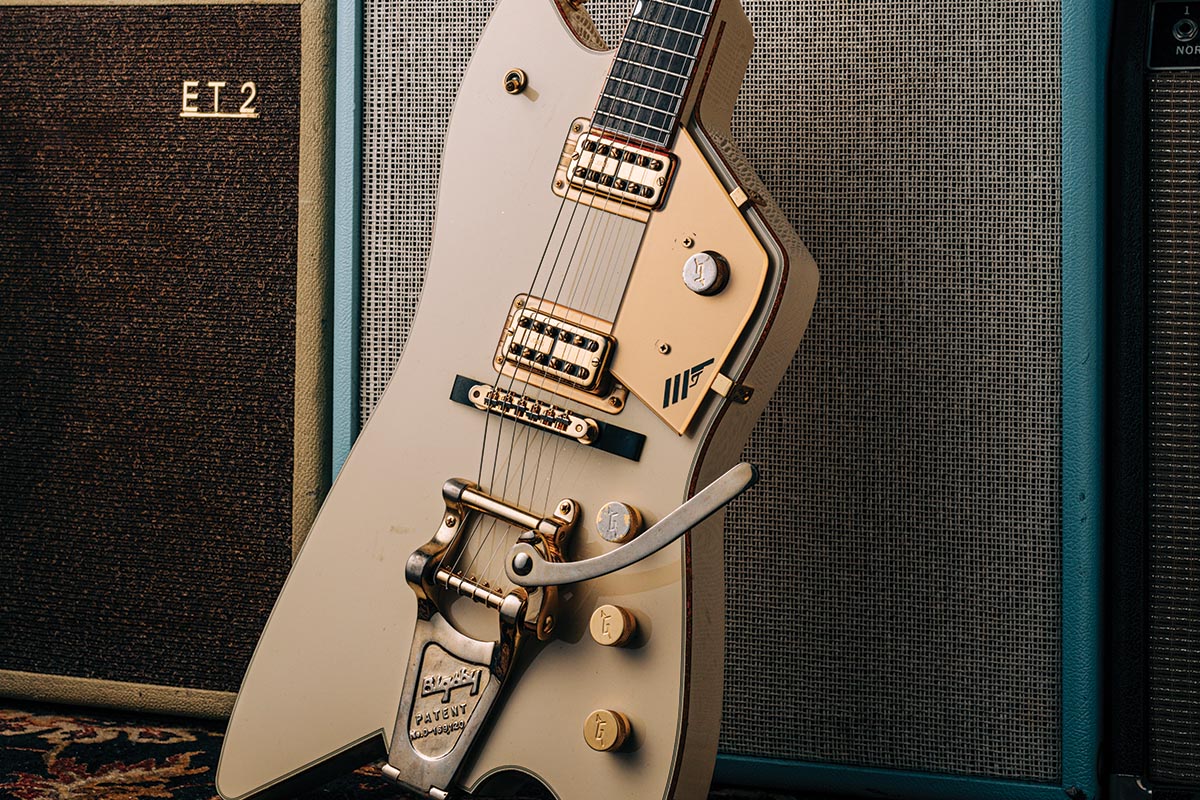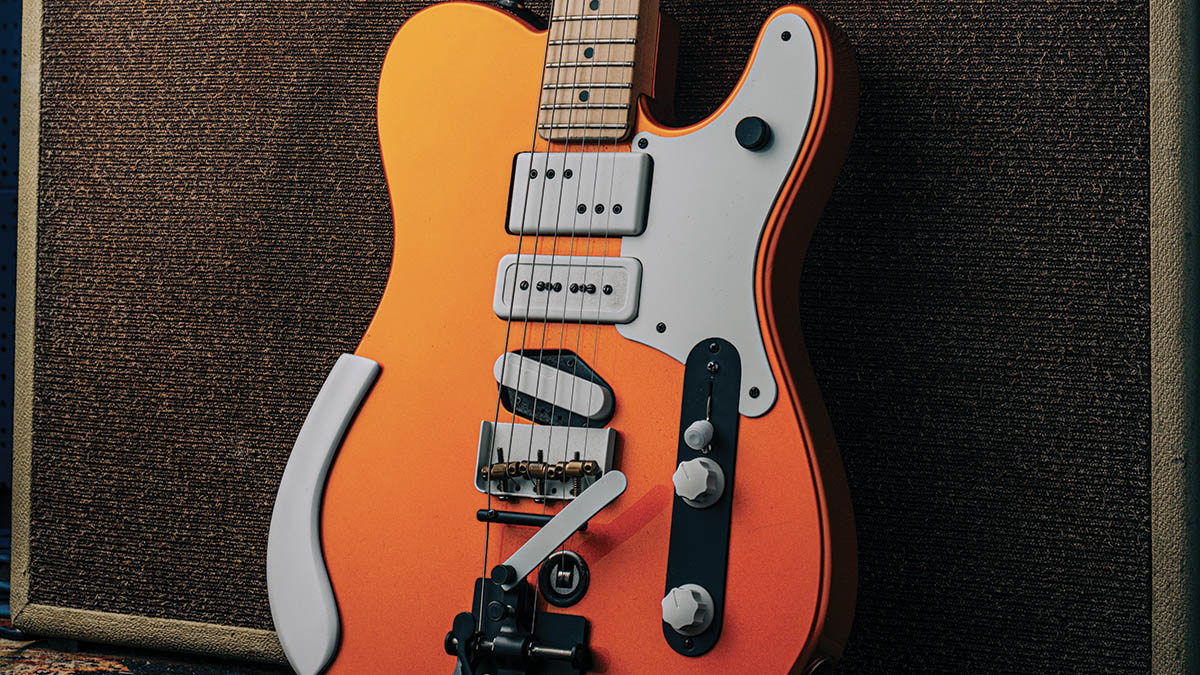Jack White's guitar gear: his wackiest guitars, pedals and amps through the years
What can we learn from the White Stripes mastermind's gear? Looking through his collection, he is both junk store aficionado and nutty professor, chasing tones that exist out of the pop-cultural timeline...

Jack White cast himself as a rock ’n’ roll revivalist as The White Stripes were making their bones at the Gold Dollar in Detroit, reanimating garage punk with the hectic industrial pulse of the city. But that was never the whole story.
Over the years he has been equally a Nikola Tesla figure, an innovator, taking a pedalboard ex machina approach to electric guitar tone, demonstrating a design and entrepreneurial acumen that has made his label, Third Man Records, a self-sustaining indie powerhouse.
His gear choices add to the intrigue. This is the man who coated his go-to 50s Kay archtop with paper and made the Airline fibre-glass bodied electric a must-have, and yet he does not restrict himself to pawnshop gold.
Heck, he was on the cover of Total Guitar with a Gretsch White Penguin. That day, he said guitars were tools be treated with “respect or disgrace”. He might be onto something.
Pawnshop gold
1964 ‘JB Hutto’ Res-O-Glass Airline Guitar
Think of Jack White and the chances are it will be this retro electric that comes to mind. It was a model long forgotten, an oddity comprised of a hollow fibreglass body, with a pair of Valco single-coils in humbucker-sized covers, a non-adjustable neck with few high-profile users.
Rory Gallagher used one but its found its true calling in The White Stripes, its voice just the thing for a sound that stood astride the threshold of garage punk chaos. They used to be cheap. But for a while in the 2000s they were the coolest guitar you could find, and amid an over-heating market for vintage models Eastwood made a reissue.
Get The Pick Newsletter
All the latest guitar news, interviews, lessons, reviews, deals and more, direct to your inbox!
'50s Kay Archtop
Covered in paper to stop it squealing or to make it look good? It certainly won’t play good, at least not in the conventional sense. But then Jack White has spoken before relishing a little fight with a guitar. Wrestling a difficult setup can yield some great tones; it’ll make you play harder, too.
The Kay, however, is parked in open A and used for slide, perhaps the only technique that finds tender mercy in a guitar’s high action. He recently used it to play the national anthem at Comerica Park, home of the Detroit Tigers.
1970s Crestwood Astral II
The 1970s were not altogether kind on guitar design and manufacturing but then it did bring forth some thrift store curios that seem tailor-made for gear iconoclasts. Again, this is another from the early days of The White Stripes, and like the Airline, it was also subject to an Eastwood remake.
It is the sort of guitar that deserves a ramshackle tube amp in need of a service and a capricious germanium fuzz to bring the best out of it. White has also used a variety of Harmony Meter and Rocket hollowbodies, each providing a variation on the theme – big on resonance and free-radical quirks, low on price, and very cool.
Vintage
1969 Fender Telecaster with Bigsby / 1954 Fender Telecaster
Thematically and spiritually, the Fender Telecaster was made for White. It is the hammer reborn as electric guitar, the ultimate tool. You can hear these across The White Stripes catalogue, and later White would bring onboard some more modded Teles, but alongside the Airline and Kay guitars, these Teles were crucial in the recording of Icky Thump.
1957 Gretsch G6134 White Penguin
The guitar from TG’s 2007 cover, this high-end bird was purchased in Nashville around 2007, and it was not a purchase White made lightly. Understandably, given the retail price on such a rare vintage bird.
Weirdly, he said it performed not unlike the Airline, and that is one of the big lessons we can take from White’s gear choice. Price doesn’t matter; feel and tone are everything.
Gretsch 1957 G6199 Jupiter Thunderbird
Rarer than hen’s teeth, with reportedly only 12 to 16 models made, White most notably used this retro-futuristic electric with the Dead Weather.

Off-menu custom builds
Modded Gretsch ‘Copper Triple Jet’
Working with Randy Parsons, White took the double-cutaway chassis of a Jet and turned it into a three-pickup monster with an MXR Micro Amp wired to the middle pickup to provide on-tap overdrive.
As White explained to Guitar Player, he liked the elemental nature of the copper top, and for The Raconteurs, everything had to be copper – microphones, pedals, the lot. “We even went as far as putting copper frets on that guitar – just to see how it sounded,” said White. “It sounded incredible! But copper is so malleable that the frets wore out after one show.”
Modded Gretsch Anniversary Jr ‘Triple Green Machine’
Take one G6118, make it a double cutaway and a third pickup, and you might have something worth showing your friends. But here’s a guitar that shows you how White’s mind works.
This mutant Gretsch, spec’d up with Randy Parsons, speaks to the showman in White – not to mention the MacGyver – housing a wooden replica of a ‘green bullet’ Shure mic that can be pulled out and screamed into, and a theremin for added Twilight Zone noise.
It also features MXR Micro Amp routed to the middle pickup a la the ‘Copper Triple Jet’ and a lever-controlled mute for string-dampening. It is a bizarro guitar, and yet so practical.
Three Golden Gibsons: Fort Knox Les Paul, Flying V, Skunk Baxter Firebird
Another instance of an elementary metal catching White’s magpie eye, the Three Golden Gibsons project all share the ‘Fort Knox’ treatment, with Gold Top bodies, gold hardware, and a suite of custom appointments.
The Les Paul – a real heavyweight – came first, a gift from Gibson with White specifying a maple neck. But after surprising him with a Flying V in a similar treatment, White ordered a third Firebird to Skunk Baxter specs. These were used for The Raconteurs.
Gretsch G6022CWFF Rancher Falcon ‘Rita’
This cutaway acoustic looks like it is on loan from Dollywood but turn it around and you’ll see where it gets its name, Kore Flatmo’s pyrographic illustration of film icon Rita Hayworth. It was used extensively on the Icky Thump tour.
Besides the Rita drawing, using red sparkle vinyl instead of the gold flake you’d see on a White Falcon model is an aesthetic power move. Sound-wise, it’s got big, deep lungs.
Fender Three-Wheel-Motion Low Rider Telecaster
Perhaps the ultimate Telecaster to come out of the Fender Custom Shop, this was once a Nashville Tele with a B-bender, but has been souped-up beyond recognition. Finished in Low Rider Metallic Orange, it has an inspired pickup trio of a Lace Sensor single-coil at the bridge, P-90 in the middle and Wide Range humbucker at the neck, and a kill-switch for kicks. There is also a G bender too, and a D-Tuna style mechanism for Drop D tuning on the fly.

Effects, gizmos, weird stuff, and amplifiers
Peppermint Triple Tremelo
A rotating speaker unit with three types of Leslie inside, a peppermint visual display and two speeds, this was designed and built by White himself, and wired up by Johnny Walker.
Sears Silvertone 1485 6x10 amp
This was a very different beast to any of the guitar amps manufactured by Danelectro in the ‘60s. The six 10” Jensen C10Q speakers in the cabinet would see to that, with a twin-power amp sections driving three speakers apiece. Alongside the faithful Fender Twin, the Silvertone was elemental in finding White’s early guitar sound.
Fender Twin Reverb
The best-sounding clean amp in the world? Possibly, and it is duly sweetened by a spring reverb that is pure Americana, and the perfect platform for White’s tone.
DigiTech Whammy
Offering pitch-shifting via treadle, the Whammy is arguably the greatest performance-related effects pedal of its generation and is a perennial on White’s ‘board. Most notably used on Seven Nation Army.
Electro-Harmonix POG
The POG was behind White’s organ-esque tone on Blue Orchid, and its octave effects have become one of White’s signature sounds, later inspiring his collaboration with CopperSound Pedals.
CopperSound Triplegraph
This is the archetypal White collaboration, taking one obsession – namely octave pedals – and then reaching into archive of electrical engineering to borrow a trio of Morse Code telegraph-style footswitches for a pedal that reimagines octave pedals as a concept.
One switch activates an octave-up effect, the other an octave-down, with the middle switch allowing you to momentarily take your dry signal out of the effect for full-on octave madness. Alternatively, use that middle footswitch to bring in external effects and turn them on momentarily. Like the Whammy, it presents pitch-shifting in a radical, performance-facing way.
Electro-Harmonix Big Muff Pi
The last word has to go to the pedalboard staple that puts hair and teeth into White’s guitar tone. You could pare his ‘board down to this and a Whammy pedal and get through a White Stripes set, with the Pi serving up a hot dish of sustaining fuzz that sticks to the ribs. Ideal for a single-guitar band when you need to give your sound a sense of scale and width without losing aggression.
- Fear of the Dawn is out now via Third Man Records.
Jonathan Horsley has been writing about guitars since 2005, playing them since 1990, and regularly contributes to publications including Guitar World, MusicRadar and Total Guitar. He uses Jazz III nylon picks, 10s during the week, 9s at the weekend, and shamefully still struggles with rhythm figure one of Van Halen’s Panama.
“It holds its own purely as a playable guitar. It’s really cool for the traveling musician – you can bring it on a flight and it fits beneath the seat”: Why Steve Stevens put his name to a foldable guitar
“Finely tuned instruments with effortless playability and one of the best vibratos there is”: PRS Standard 24 Satin and S2 Standard 24 Satin review










